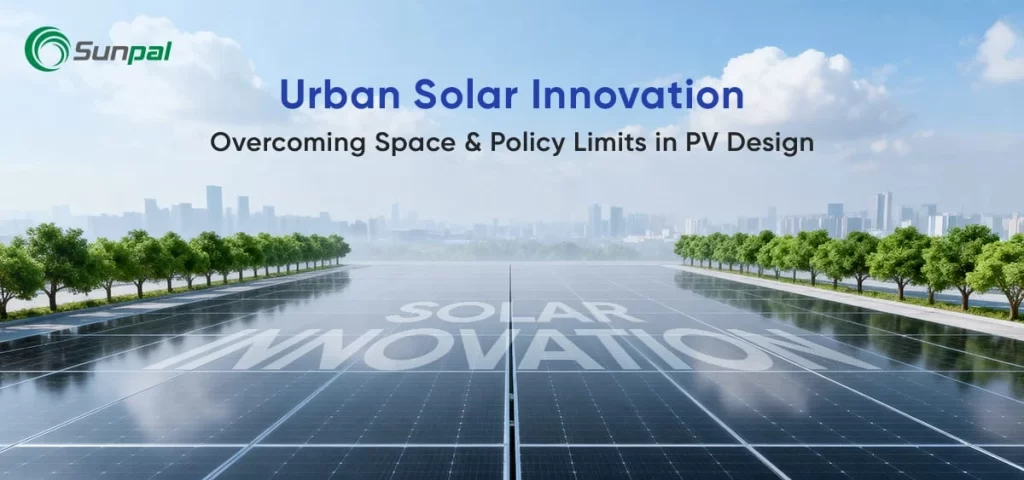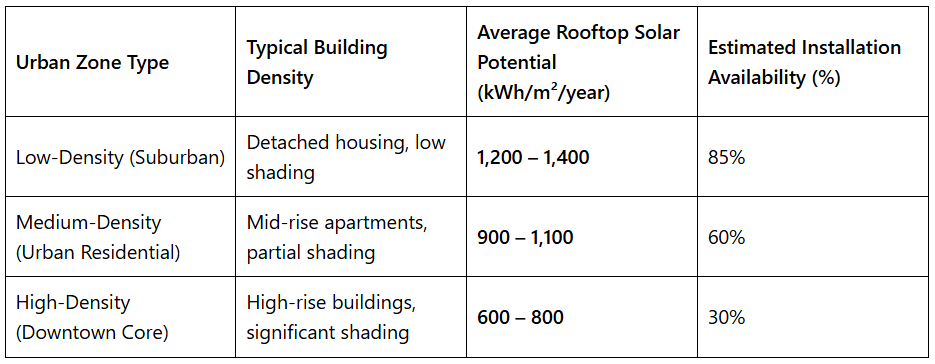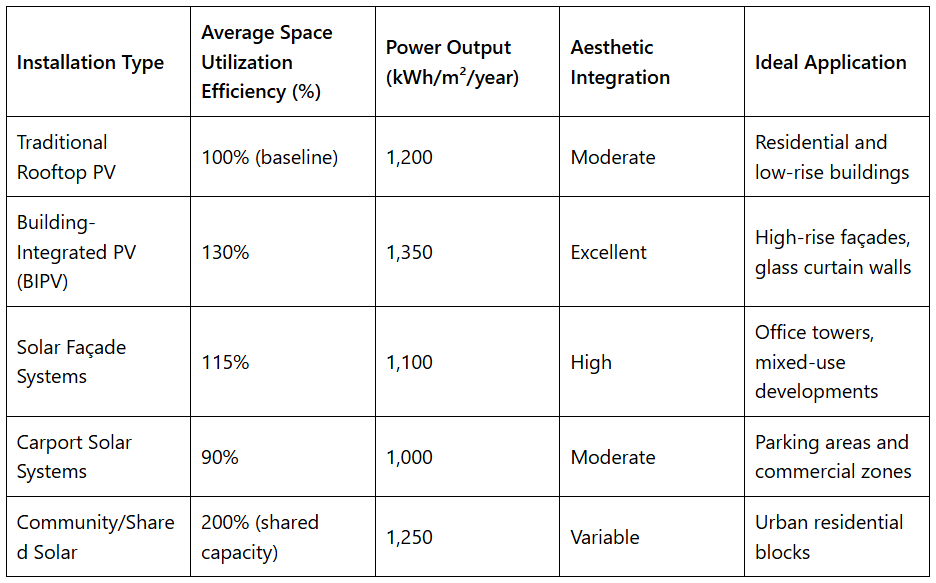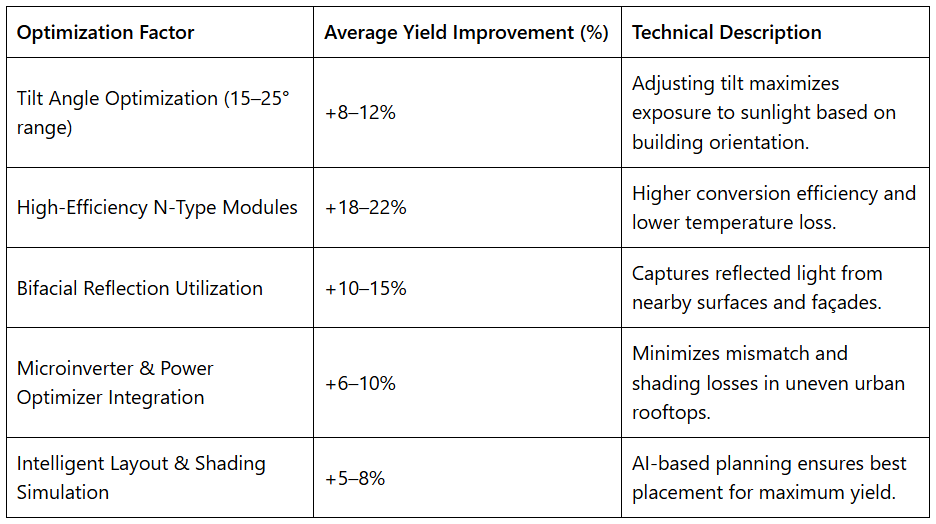
Urban Solar Growth: High Demand, Limited Space
Can cities truly go solar when every square meter counts?
Urbanization and the global energy transition are reshaping how cities generate and consume electricity. While solar power adoption continues to accelerate worldwide, metropolitan areas face a unique dilemma — high energy demand but limited installation space.
De acordo com o International Energy Agency (IEA), over 70% of global CO₂ emissions come from cities, making urban solar PV systems essential for achieving carbon neutrality. Yet, rooftop constraints, strict construction codes, and design regulations continue to slow adoption.
Sunpal Solar — a world-leading photovoltaic manufacturer — is addressing these challenges through advanced engineering, modular design, and compliance-ready project management, enabling cities to embrace sustainable energy without compromising structure or aesthetics.
The Real Challenge: Density and Regulation
Urban solar development is limited by building height restrictions, shading, and zoning ordinances that regulate installation visibility and tilt angles. In some regions, lengthy permitting processes also discourage small and mid-scale solar adoption.
Chart 1: Average Rooftop Solar Potential by Urban Density (kWh/m²/year)

For instance, a suburban property might easily host a 10 kW solar system, whereas the same-sized rooftop in a dense city may only allow half that due to design and safety restrictions. Overcoming these issues requires not just advanced equipment but also in-depth regulatory knowledge — a key advantage of Sunpal Solar's engineering teams.
Innovative Urban PV Solutions: Thinking Beyond the Rooftop
Solar innovation is transforming how cities harvest clean energy. Building-Integrated Photovoltaics (BIPV) and solar façades turn unused vertical surfaces into efficient energy generators, while carport systems and community solar models open new opportunities for shared generation.
Chart 2: Space Efficiency and Power Output Comparison (Traditional Rooftop PV vs. BIPV vs. Solar Façade)

BIPV modules not only produce energy but also replace traditional building materials, improving return on investment and environmental performance.
Sunpal Solar's high-efficiency bifacial panels and modular off-grid hybrid systems are tailored for compact urban environments, enabling developers to maximize available area while maintaining architectural harmony.
Navigating Local Restrictions with Expertise
Local regulations can vary dramatically — what's approved in one district may be restricted in another due to design or fire safety requirements.
Sunpal Solar simplifies the compliance process by working directly with municipal authorities and certified contractors to ensure all systems meet building codes, electrical standards, and grid interconnection rules.
Through experience in more than 100 countries, Sunpal Solar helps commercial and residential customers streamline approvals, reduce installation time, and achieve long-term reliability under diverse local frameworks.
Design Optimization: Getting More Power from Less Space
In space-constrained areas, efficiency becomes the key to profitability. N-type TOPCon modules, bifacial dual-glass technology, and intelligent microinverter systems now allow city projects to achieve high output in small spaces.
Chart 3: Output Improvement by Design Optimization (Tilt, Module Efficiency, Reflection Management)

Sunpal Solar's latest panels achieve up to 23.3% efficiency, producing more energy per square meter and enabling shorter payback periods. These innovations make solar viable even on older rooftops or irregular building surfaces.
Future Outlook: Toward Solar-Integrated Cities
The next stage of urban solar growth involves solar-integrated infrastructure, EV charging canopies, and transparent photovoltaic glass. Paired with energy storage systems, these technologies allow cities to operate smarter and cleaner.
Emerging policies such as net metering, feed-in tariffs, and green building incentives will further boost adoption. Sunpal Solar continues to lead this transition with smart, regulation-ready PV systems designed for dense city environments and future energy demands.
Conclusion: Reimagining the City's Solar Future
Despite spatial and regulatory challenges, cities hold immense potential for solar transformation. Through innovation, expertise, and compliance-driven design, Sunpal Solar empowers urban communities to achieve sustainability without compromise.
From compact rooftops to skyscraper façades, Sunpal is redefining what solar means for the modern city — turning constraints into opportunity and light into limitless energy.
FAQs: Urban Solar PV System Installation
1. What makes urban solar PV installation more complex than suburban or rural projects?
Urban projects face stricter zoning laws, limited roof space, and shading from nearby structures. Each system must be custom-engineered to meet energy goals and local regulations. Sunpal Solar's technical team provides turnkey design and installation support for these complex conditions.
2. How can solar panels be installed on buildings with very limited roof area?
When rooftop space is minimal, vertical surfaces can host building-integrated photovoltaics (BIPV) or façade-mounted panels. Sunpal Solar's bifacial dual-glass panels and compact inverters are optimized for space-limited projects in dense city environments.
3. Are there specific regulations or building codes for installing PV systems in cities?
Yes. Cities often require compliance with fire safety rules, visual impact guidelines, and electrical load standards. Sunpal Solar ensures that every project meets local solar permitting requirements and international safety certifications such as CE, IEC, and UL.
4. What solar technologies are best suited for urban environments?
High-efficiency N-type modules, microinverters, and bifacial solar panels are best suited for compact rooftops or shaded areas. These technologies maximize energy production per square meter and enhance ROI for city projects.
5. Can shared or community solar programs work in dense city areas?
Yes. Community solar allows multiple property owners or residents to share a single installation and receive proportional energy credits. Sunpal Solar offers scalable solar project development services supporting such shared energy models.
6. How does Sunpal Solar ensure project compliance in cities with complex approval processes?
By working directly with local governments, inspectors, and utilities, Sunpal Solar reduces approval times and ensures full compliance. The company's global certifications make its systems compatible with diverse building and grid standards.
7. What are the long-term maintenance needs of urban PV systems?
Urban environments expose panels to higher dust levels and shading. Routine cleaning and performance monitoring are essential. Sunpal Solar offers smart monitoring software and remote diagnostic tools to maintain peak performance.
8. How does energy storage enhance solar power usage in cities?
Integrating lithium battery energy storage allows excess solar power to be stored and used at night or during peak demand, improving energy independence and cost efficiency. Sunpal Solar's hybrid solar systems seamlessly combine PV and storage for maximum reliability.
